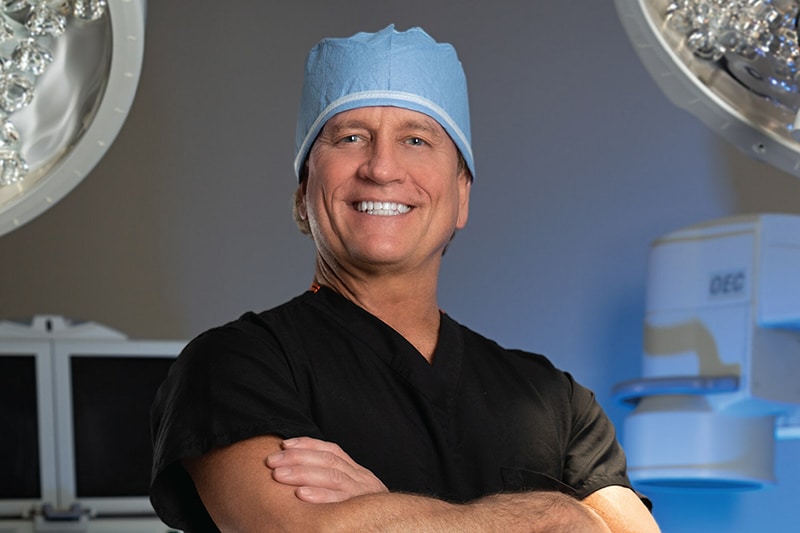Dr. Jeffrey DeClaire, a pioneer in robotic-assisted total knee replacement and founder of the Michigan Knee Institute in Rochester, is the first to use a new balancing tool that combines artificial intelligence and robotic-assisted technology to provide superior outcomes for knee replacement patients.
Dr. Jeffrey DeClaire, a pioneer in robotic-assisted total knee replacement and founder of the Michigan Knee Institute in Rochester, is the first to use a new balancing tool that combines artificial intelligence and robotic-assisted technology to provide superior outcomes for knee replacement patients.
DeClaire, who is the chief of the Department of Orthopaedic Surgery and director of adult reconstruction and joint replacement at Ascension Providence Rochester Hospital, discussed his research during the Annual Meeting of the American Academy of Orthopedic Surgeons (AAOS) in Las Vegas March 7-11.
He participated in clinical studies of the BalanceBot, a robotic knee ligament tensioning device that helps the surgeon balance knee ligaments and craft an accurate surgical plan. The result is a more normal ligament function tailored to the patient’s individual anatomy.
The BalanceBot, manufactured by Corin Group, which is based in the U.K., allows physicians to have a “second pair of eyes” before they make the cuts.
Incorporating both robotic assistance and artificial intelligence, DeClaire’s “Elite Knee” results in a more successful knee replacement and reduces the risk of complications, which can sometimes involve malalignment and knee instability, stiffness, limitation of motion, and pain.
Multicenter clinical studies show a 98 percent patient satisfaction rate for patients two years post-surgery, which far surpasses the 81 percent satisfaction rate for traditional, nonrobotic techniques.
Using a 3D model of the patient’s anatomy and the BalanceBot to balance ligament tension, DeClaire can visualize and plan implant positioning. He utilizes a robotic cutting guide to make the planned bone cuts, with the BalanceBot ensuring soft-tissue balance, which is vital to the total knee replacement’s short- and long-term success.
“This new high-tech combination of robotics, 3D computer technology, and the BalanceBot to monitor the tension guarantees an incomparable level of precision and accuracy compared to traditional methods,” DeClaire says. “It means that patients can resume all their activities without pain or mobility issues and never look back.”
During the AAOS Annual Meeting, DeClaire joined physicians representing centers throughout the U.S. to present findings showing that balancing ligaments is more significant than alignment for the best outcomes among total knee replacement patients.
The study measured pain levels of 266 patients two years after robot-assisted knee replacement to determine the role joint laxity (ligament balance) and alignment play in decreased joint pain. Researchers found no association between alignment and outcome, indicating joint balance may have a greater impact on outcome than alignment.
DeClaire’s clinical research addressing the impact of alignment and ligament balance following his “Elite Knee” procedure is published in The Journal of Arthroplasty. The study concluded that knee replacement patients who had surgery using this new technique have better outcomes two years after the operation than patients who had traditional surgery.
Originally Posted on DBusiness.com

